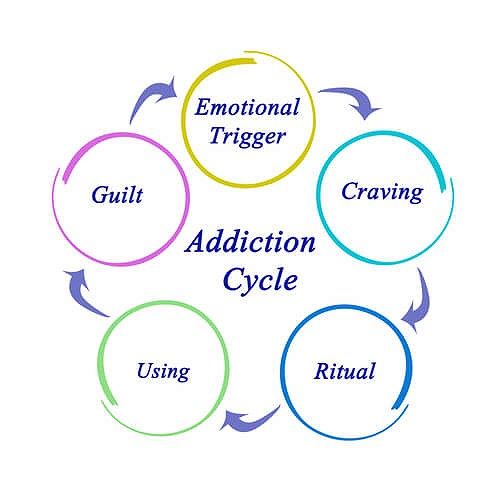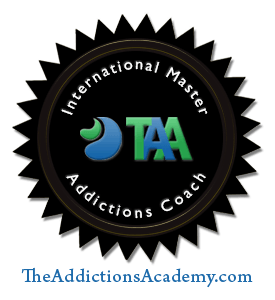What is relapse prevention planning?

You are struggling with a substance use disorder (SUD) and have made it through a detoxification program. Perhaps instead, you have a behavioral addiction and found a way to stop engaging in your addictive behaviors for a few days or weeks. What do you do next? How do you avoid returning to addictive behavior? Relapse prevention planning is all about managing relapse. Relapse prevention planning is a team effort. My goal is to help each person understand his or her addiction cycle and implement an individualized plan of action to either avoid relapses or effectively manage relapses if they happen.
What exactly is a relapse?
Before addressing the definition of relapse, it’s important to define a “lapse.”
Dennis Daley and Antoine Douaihy, in their book Relapse Prevention Counseling, define a lapse as “an initial episode of substance use following a period of recovery.”
A relapse is a return to unhealthy addictive behaviors and the addiction cycle after a lapse occurs. A lapse may or may not result in a relapse. It typically develops in stages: emotional, mental, and finally, physical relapse. Emotional relapse can begin days to weeks before actual substance use or recurrence of a behavioral addiction.
How do I avoid a lapse and relapse?
This is where relapse prevention planning comes into play. Recovery begins when a person struggling with an SUD or behavioral addiction stops the cycle of addiction. However, as many people know, leaving a detoxification program or stopping addictive behaviors for a short time is not enough to avoid returning to those behaviors. Stopping addictive behaviors is the first step. What comes next is developing a plan that analyzes the underlying reasons for addiction, identifies the triggers for addiction behavior, establishes healthy life and emotional coping skills, and identifies a support system to help avoid relapse from occurring. Below is a general process I take my clients through to develop an effective relapse prevention plan.
Step 1: Admitting there is a problem
Relapse prevention can’t begin unless a person struggling with addiction recognizes he or she has a problem. It’s important to understand what makes a behavior an addiction. Frequently, we talk about the four “C’s” of addiction:
· UnControllable
· Compulsive
· Results in Craving the behavior/substance
· Is engaged in despite Consequences (realized or potential)
A person needs a healthy respect for the seriousness of the addiction. It’s important to recognize that addiction has no floor. There are no depths to which a person with addiction won’t sink if addiction remains unchecked. Once the problem is fully appreciated, it’s time to move to step 2.
Step 2: Understanding the Cycle of Addiction
Addiction is a cyclical disease. The cycle feeds into itself and perpetuates the addictive behavior (see above figure). Over time, addiction requires more intense addictive behavior to have the same effect, which leads to worsening of the addiction. Everyone’s addiction cycle plays out differently, and awareness of the cycle helps one appreciate where he or she may be in the cycle. Cycle awareness may help break the cycle once engaged.
After reviewing the cycle, it’s time to break it into individual parts. We focus on identifying triggers, what it feels like to crave the addiction, what defines the addiction ritual that leads to engaging in the addictive behavior, and the emotional aftermath that feeds into the next episode of the addiction cycle. We perform an analysis of everyday activities, special events, and social interactions that could lead to addictive behavior and should be avoided or managed healthily.
Step 3: Creating the plan
Once a thorough understanding of what drives an individual’s addiction has been established, it’s time to create a relapse prevention plan. This includes exploring healthy living habits and coping skills, as well as setting goals for managing life and addiction. Recognizing subtle warning signs, such as increased anxiety, withdrawal, or neglect of self-care, and identifying triggers are crucial parts of the plan. Developing a daily routine and a strategy for handling special events are also important. Managing emergencies and unexpected life disruptions is key to effective relapse prevention. Additionally, identifying members of one’s support team is an essential element of any relapse prevention plan.
The written plan is frequently multiple pages, and having a “cheat sheet” with major bullet points is important to have available at all times, such as in one’s wallet, purse, or in an easily accessible cell phone app.
Step 4: What to do if I Relapse
Unfortunately, relapse is frequently part of recovery. Understanding what to do if a relapse occurs is as important as preventing relapses entirely. Effective relapse management can be the difference between quickly breaking the addiction cycle and spiraling out of control. Relapses aren’t a moral failure, and shame must be avoided. Shame will result in the perpetuation of the addiction cycle. Relapse should be a learning experience where the reasons for relapse are analyzed and modifications to one’s plan are made so future relapse can be avoided.
Relapse prevention planning shouldn’t be done alone. Having a therapist, counselor or certified recovery coach who is adept at relapse prevention planning is key to developing a successful plan. They can also provide a neutral, supportive perspective and help you process any setbacks constructively.
Relapse does not define your recovery; your willingness to learn and adapt does. By creating a comprehensive relapse prevention plan, you’re equipping yourself with the tools, support, and mindset needed to sustain your progress. Be empathic with yourself, celebrate every victory and hold on to hope. Recovery is possible, and with the right plan in place, each new day is another opportunity to move forward.
Ken Markowitz MD, IMAC, CHCQM
